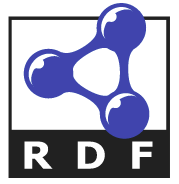For this month’s blog entry I originally planned to create a reference for RDF serialization formats. My idea was to create a table listing all the known formats, with links to their specs (when they have one), their age, origin, a sample, and some opinionated comments–for example, why creating new documents in RDF/XML made sense in 1999 but no longer does.
I recently did a review of options for creating visual representations of RDF data. I didn’t just want a general visualization tool, but something that understood RDF enough to represent class instances and literal values differently. I will emphasize instances because several tools out there can read RDF schema or ontologies and create a visualization of classes and their relationships and potential properties, but I want to see instances with their property values.
In my last blog entry I discussed various ways that different RDF datasets assign human-readable labels to resources, with the rdfs:label property being at the center of them all. I mentioned how schema.org doesn’t use rdfs:label but its own equivalent of that, schema:name, which its schema declares as a subproperty of rdfs:label. Since I wrote that, Fan Li pointed out that Facebook’s Open Graph protocol also has their own equivalent: og:title, which you can see used in the HTML…
First, reviewing some basics before I discuss the edge cases: resources in RDF are represented by URIs, and the spelling of a given URI often provides no clues about what the URI represents. For example, you wouldn’t know from looking at http://www.wikidata.org/entity/Q144 that it represents “dog” as a Wikipedia topic. (We’ll see below that this is a for a good reason.)
The following blog entries give a brief introduction to the RDF data model, the most important of the other W3C standards that build on it, and what people do with those standards:
The following blog entries give a brief introduction to the RDF data model, the most important of the other W3C standards that build on it, and what people do with those standards:


